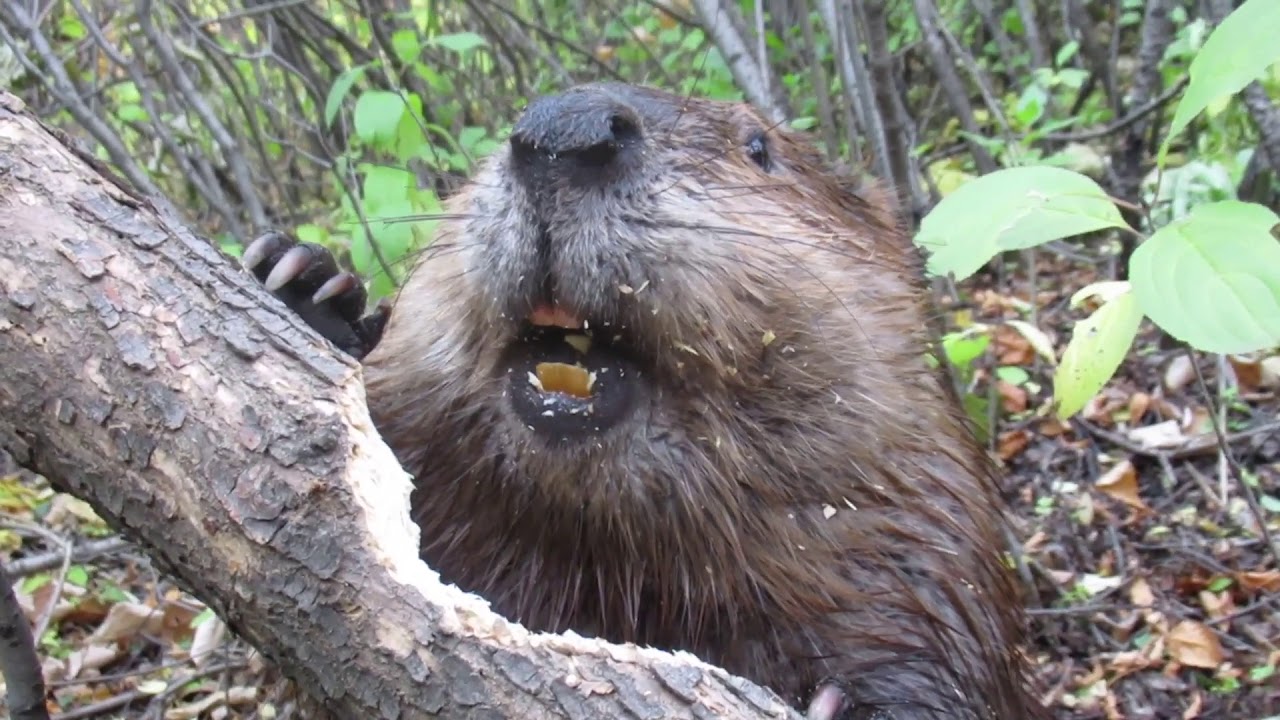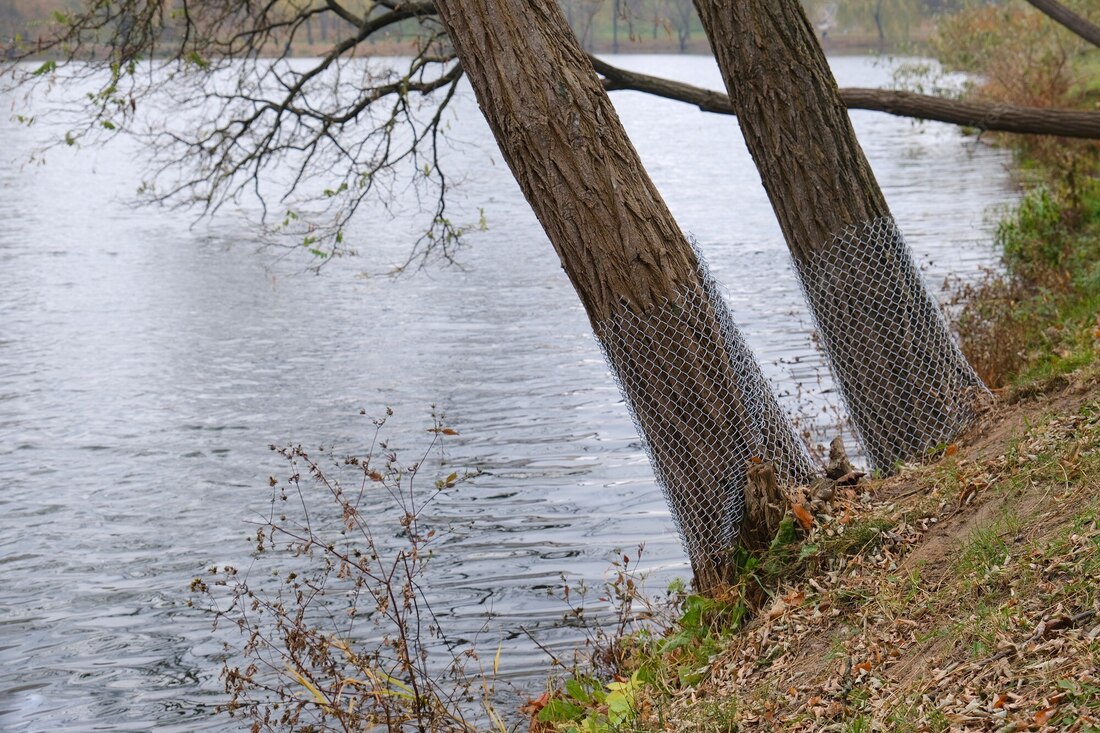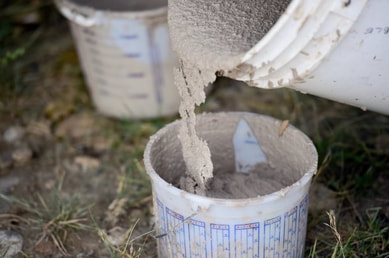Protecting Trees from Beaver Teeth!
|
You may be asking yourself, why in the world would any creature want to eat or chew wood? Well, like all rodents, beavers teeth never stop growing. Chewing wood helps prevent beaver teeth from growing too long and will ensure they stay sharp so they can chew down trees to use the material as building pieces for their lodges. While it may be obnoxious to landowners, this process is vital for beavers to maintain their health and home.
Not to fear! There are many inexpensive and effective ways to prevent beavers from gnawing on your favorite trees without resorting to lethal methods. Below are a few different ways you can protect your trees from these friendly chewers: |
Utilize fencing around trees
There are a few different ways you can use fencing to prohibit beavers from reaching anywhere from a single tree to an entire grove of trees. Individual trees can be protected by placing wired cylinder fencing around the base of each trunk. This heavy wired fencing stops the beaver from even getting to the bark in the first place. If properly installed, it can be 100% effective and only takes a few minutes to set up at a low cost with no future upkeep if undisturbed! To protect entire groves of trees, a similar method can be used, but by surrounding all trees that are to be protected with fencing rather than individually wrapping them. Finally, some people have had luck with electric fencing in place of simple wired fences. This system requires regular check-ups to ensure it is functioning properly.
How to set up individual tree fencing
|
Materials needed:
|
To install:
|
Want to protect an entire grove of trees?
That's simple! Utilizing a similar fencing system, wrap fencing around the entire grove of trees you wish to protecting, utilizing posts or trees themselves to keep the fencing in place. It is important to ensure there are no gaps at the base of the fence as beavers are great diggers and can sneak in through these holes if left open. In areas with heavy snow, it is important to ensure the fencing will be two feet taller than snow level so beaver cannot climb over the fence.
Using sand-paint to protect trees
|
Using a sand-paint mixture will prevent beavers from chewing on parts of your trees as they do not like the gritty feeling of sand in their mouth. This paint can be colored to match the color of your trees and may provide a more ascetically pleasing look if you do not want to implement fencing.
Materials:
|
Using taste to dissuade chewing
Like us, beavers are not attracted and tend to avoid certain flavors when confronted with them. As trees are a source of food for beavers, there are ways to manipulate the taste of bark to something beavers will find inedible. If you do not want to utilize fencing or the sand-paint mixture to prevent gnawing, the final option is to 'flavor the tree'. To do so, infuse vegetable or mineral oil with cayenne pepper and paint it on the tree trunks. Much like a dish that is too spicy for humans, beavers will turn their noses up at the taste and go elsewhere to find food. Some disadvantages to this method, however, is that there have been reports of the mixture causing damage to tree trunks as well as the need to reapply the mixture 1-2 times annually.




